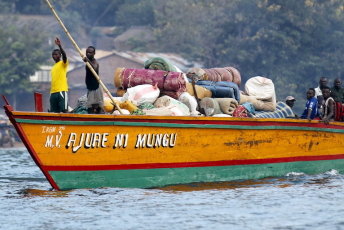Eighty percent of Uganda’s timber trade is illegal, denying Uganda around US$9.8 million annually in taxes. Uganda loses 200 000 hectares a year through deforestation, with illegal logging being one of the major causes. The illegal timber from Uganda – mostly logs and plywood and other panels – is smuggled to Kenya and Rwanda. Yet there are innovative, long-term efforts that are showing that coordinated prevention at source is a key element to effective responses.
A comprehensive protection framework to curb illegal logging has been implemented and Uganda’s forest cover has been increasing steadily thanks to this. This initiative shows that policies do influence practice, and that strong, consistent government and stakeholder coordination can result in decreased crime. The implementation has positive consequences beyond crime reduction though, in this case countering the environmental harms, and increasing tree cover.
The Forestry Policy, 2001, and the National Forestry and Tree Planting Act, 2003, provide Uganda’s principal frameworks for forest protection, illegal logging, and the regulation of the timber trade.
The National Forestry Authority (NFA), established through the 2003 act, is mandated to set up and implement management plans to involve the private sector and the community in protecting the forests from illegal logging and unregulated trade.
It was anticipated that these plans would usher in the sustainable management of the forest and also the regulation of the trade in logging. This has indeed proven to be the case, over the past 15 years. The NFA has partnered with private companies – both local and international – to reverse deforestation. Growing timber plantations as buffer zones around protected forests is an innovation that is yielding multipole positive results.
Kabi Maxwell, NFA coordinator of forest resource utilisation, told ENACT that after more than 15 years of the programme, the timber grown by these buffer plantations is beginning to meet the growing demand previously filled by illegal logging.
While the buffer zones deter access to the forests, this is not the only action. Law enforcement agencies also patrol the areas to enhance security. Maxwell says the mobilisation of local actors to plant and invest in afforestation efforts is creating a sense of local ownership, which in turn is promoting long-term efforts to reduce illegal logging.
These developments to curb illegal logging and in line with the management plans, NFA forests coordinator Stephen Galima says the NFA is making progress in the right direction. The NFA is the leading institution in forest certification, covering over 1.2 million hectares of Uganda’s land.
Galima told ENACT that a set of logging guidelines was now in place that included a process of stamping trees in all forests. This forest certification practice promotes responsible sourcing of certified timber in the market.
It is intended that each tree will have a unique identification stamp from the forest reserve it is from, thus indicating the district in which it is located. The stamp is intended to be used as an assurance that the timber has been sawn by a licensed entity from an authorised source under its charge.
The implementation of these comprehensive management plans has seen Uganda’s forest cover increasing from 9% in 2015 to 12.5% in 2020. Through these management plans, 4 000 investors have planted trees across almost 100 000 of the total 200 000 hectares allocated for the project, including in Uganda’s threatened forests of Budongo and Kashoha-Kitomi.
Yet while such reforestation and forest protection initiatives in Uganda are proving effective to curb crime and restore depleted resources, other aspects of illegal logging in a country are proving more difficult to curtail.
Uganda’s policies on timber export aim to counter illicit logging. These procedures are bureaucratically burdensome. To export timber from Uganda, a legitimate business needs to go through 17 steps involving 10 institutions, fill in 22 export documents and comply with at least six East African Community regulations.
As environmental investigative journalist, Gerald Tenywa told ENACT, compliance with these export regulations is not a guarantee a decrease in illegal logging or trafficking, as there were many loopholes in the process, often facilitated by corruption.
Uganda is not only a source but also a regional transit market. The illegal trade in timber has been sustained by growing cross-border demand in the region. Uganda is a transit point for approximately 80% of illegal timber from the Democratic Republic of the Congo (DRC) to other East African markets including South Sudan. There are also links between the actors involved in the illegal timber business from the DRC to Uganda and the trafficking in charcoal and wildlife from the Greater Virunga Landscape.
Expanding the mandate of the NFA to better collaborate with law enforcement agencies, customs and revenue authorities at border crossings will go a long way in limiting the smuggling of illegally sourced timber from and through Uganda. One way to improve coordination would be to set up one-stop border posts at each crossing points with all the relevant agencies seconding personnel. Maxwell emphasises that this multi-stakeholder team approach would create better coordination as well as transparency and accountability.
Mohamed Daghar, ENACT Regional organised crime observatory coordinator – East and Horn of Africa, ISS and Crystal Moniz, Independent Researcher







